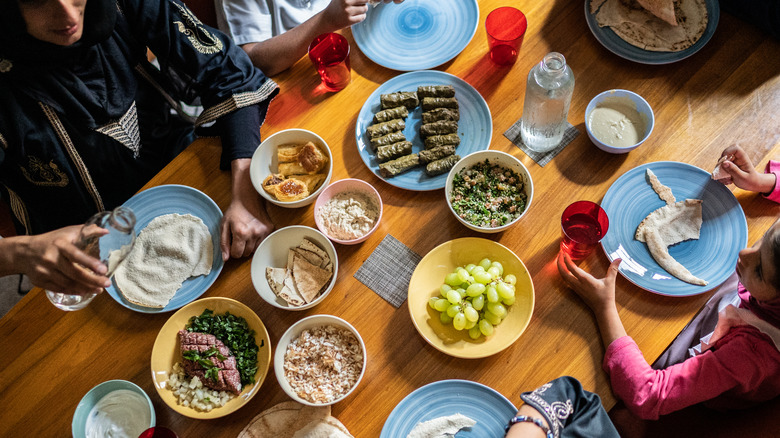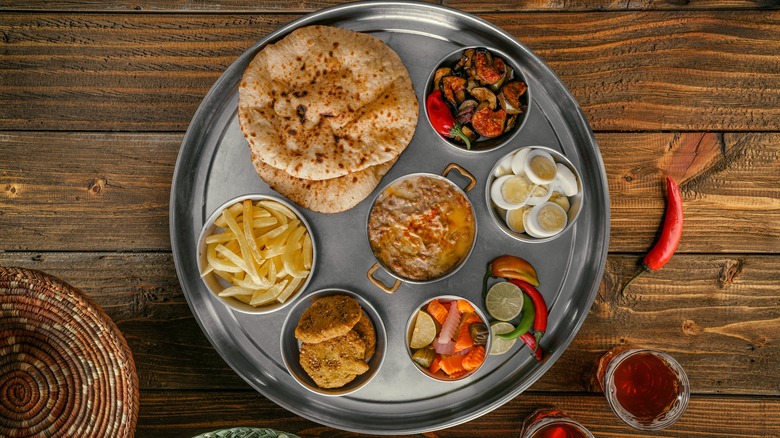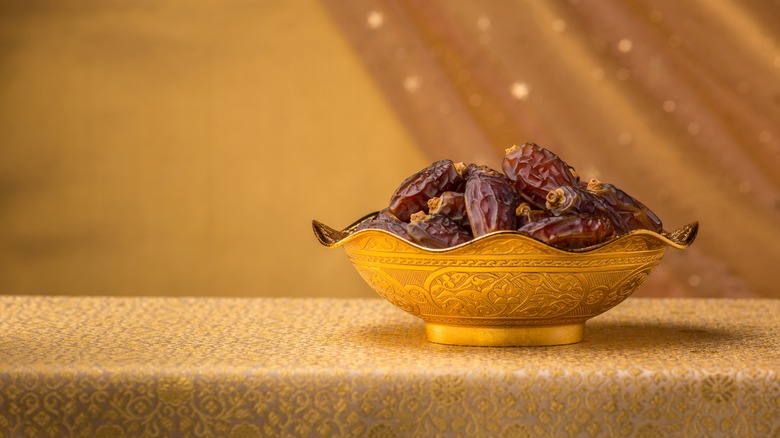The Importance Of Suhoor And Iftar During Ramadan, Explained
Ramadan remains one of the most important celebrations for nearly two billion practicing Muslims across the globe. Starting in the ninth month of the Islamic lunar calendar, the observation begins with a strict fast where no food or beverages are consumed during daylight hours. But contrary to myths about Ramadan fasting, foods aren't entirely off the table during this holiday season either. Suhoor and iftar are two traditional feasts eaten before dawn and after dusk — and are perhaps just as important in this tradition as the fast itself, as they provide crucial sustenance to last throughout the day and are times when families come together.
Taking place right after the fajr, or beginning prayer for the day, suhoor is a time to gather together and feast on a filling breakfast meal before the sun rises. Since nothing can be eaten for hours after this meal, the dishes served during suhoor are nothing short of filling, and feature a wide variety of proteins, produce, and carbs. Iftar, on the other hand, starts after the maghrib, or sunset prayer.
And if there's one thing you should know about Ramadan, it's that not everyone fasts during the entire day. The Islamic faith does have exceptions on who should or should not participate in abstaining from sustenance, as young children, pregnant women, elders, and those with illnesses are typically not expected to fast. Outside of these groups, practicing Muslims are only supposed to eat during suhoor and iftar.
Iftar has a greater focus on snacks than Suhoor
There are a plethora of dishes that adorn the table during both suhoor and iftar. Rice puddings, lamb tagines, and paneer fritters are just some of the many foods that are commonly enjoyed during these meals. If you're looking for something sweet, halvah is a sugary dessert made with honey and sesame seeds that is commonly eaten around the Ramadan holiday. The suhoor and iftar meals do have some critical differences outside of the time they are enjoyed, however — mainly revolving around the types of recipes served in each.
Because the act of skipping meals and water for an entire day can be physically taxing for anyone, suhoor places greater emphasis on well-rounded, nutritious meals based around ingredients that satiate hunger and give off energy slowly over time. Complex carbs such as breads, fruits, and oats are the star foods here, as the human body takes much longer to break down their sugars. Iftar, by comparison, has a much greater emphasis on bite-sized platters and snacks that can be enjoyed throughout the night, and some observers of Ramadan even follow up with a dinner afterward.
Dates are one of the most commonly eaten foods during suhoor and iftar
No ingredient may be as prevalent during suhoor and iftar as the date, a fruit that likely began growing in the Middle East and has a lot of emblematic importance in the Islamic faith. In the Quran, date palms are symbols of prosperity, growth, and wealth, with their fruits commonly eaten and referenced. The holy texts of Islam say that the Prophet Muhammad even ended his own fast by consuming a handful of them. Many observers of Ramadan therefore begin every feast by enjoying a few dates before eating the meal, and sometimes the dates are stuffed with even sweeter ingredients such as almond paste.
Dates aren't just enjoyed for their symbolic value either, as these fruits are high in fiber and sugar as well. Fiber is commonly known to aid in digestion and help the human body feel full, which can aid in combatting hunger pangs before (and after) a suhoor or iftar meal. Their potent sweetness can also quickly combat any drop in blood sugar levels that might occur throughout the day, making them the perfect break-fast snack during this holiday.



